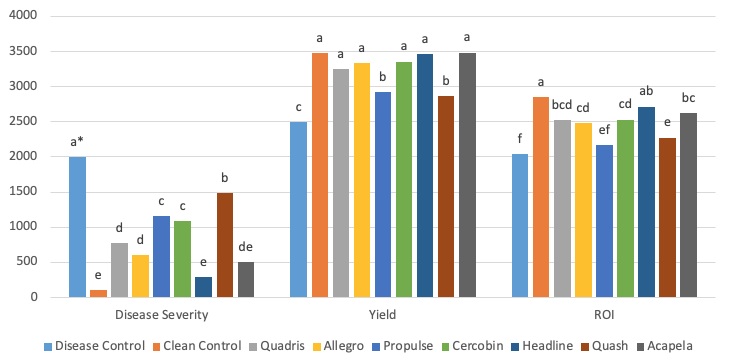Anthracnose can cause severe yield and seed quality issues in dry beans. Anthracnose is managed in part with genetic resistance, clean seed and chemical seed treatments. Locally grown seed increases the risk of a disease outbreak, and growers are encouraged to use fungicides to manage this risk. The purpose of the study was to measure fungicide performance and economic returns, with a focus on fungicides registered to control white mold in dry bean. Can one fungicide manage white mold and anthracnose?
A total of four small plot experiments were run at the Huron Research Station at Exeter Ontario between 2014-2018. Infected seed and a foliar inoculum were used to provide the initial disease infection. Overhead irrigation was used to promote disease growth. Seven fungicides were compared to an untreated control treatment. An index was developed to measure disease severity over time – as the index increased, disease increased. Seed yield (kg/ha) was adjusted to 18% moisture and return on investment ($/ha) accounted for the fungicide and application costs, with all other costs assumed to be the same.

* Bars within a group (location and year) with the same letter are not significantly different (P<0.05).
1AUDPC = pod disease ratings over time is graphed, and the area of the disease curve is measured to estimate the disease progress. Higher values have greater disease severity ratings.
The strobilurins (Quadris, Headline, Acapela) had low disease, high yields and the best economic returns (Figure 1). Acapela also provides some suppression of white mold. For the white mold products, Allegro had the best combination of anthracnose control, yield and ROI. Cercobin had more disease than Allegro, but similar yield and ROI. Propulse had similar disease to Cercobin, but lower yield and poor return on investment (ROI) – as low as the infected control. Quash (metconazole) was a poor treatment, with high disease severity, low yield and a poor ROI.
Originally published in Crop Protection 2020, Volume 127. Updated July 2020 for drybeanagronomy.ca.